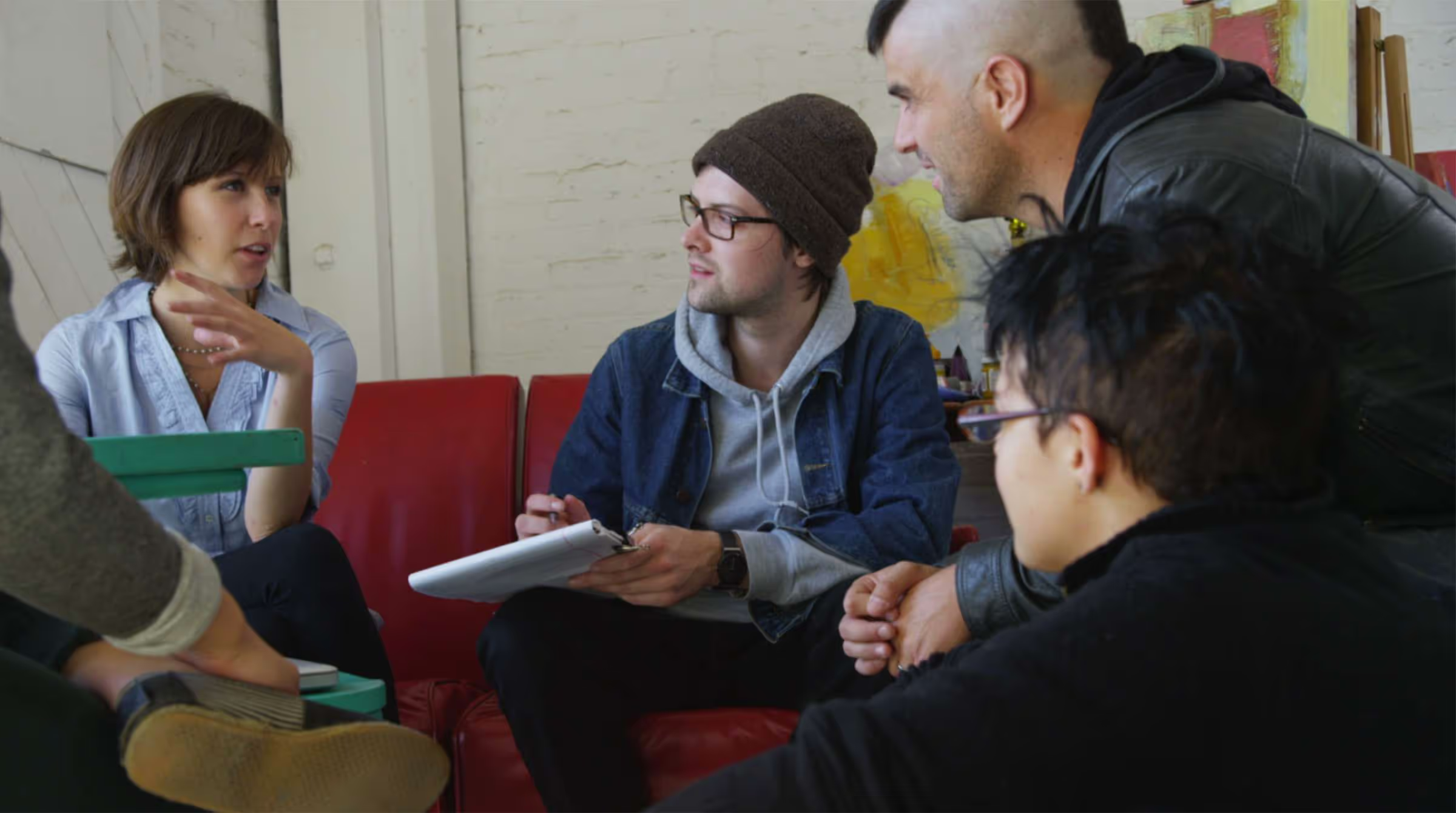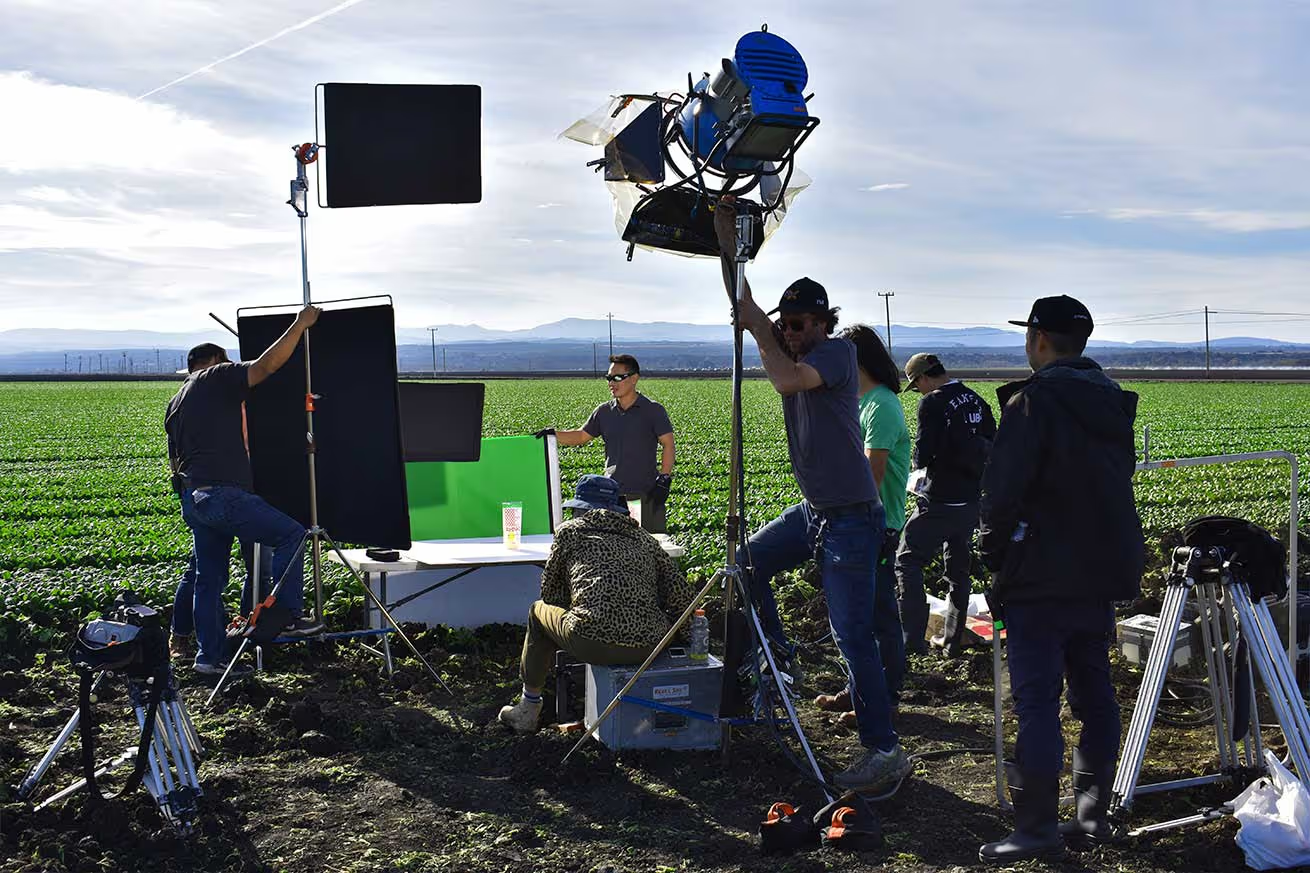Table of Contents
The initial stage of video production is called pre-production. Here, the production team plans out what they need to turn a concept into a reality. This phase sets the groundwork for the creative approach, and when handled with care, skill, and expertise, it paves the way for the project's success.
The pre-production checklist provided here outlines the primary steps of this phase, aiming to assist individuals in understanding what to anticipate when collaborating with a video production team. Below are the key steps most video producers follow when initiating a project:
Pre-Production Checklist: How to Plan a Video Shoot
Brainstorming Ideas

Clients often come into the production process with a clear idea of their goals or intentions. However, some may need guidance in incorporating video into their marketing strategies. During this phase, the production team collaborates with the client to generate ideas and outline the project's objectives. They carefully consider what they want the audience to grasp from the video, focusing on key messages and educational aspects. This exercise holds significance whether the video is intended for branding, product promotion, training purposes, or advocacy.
Discussing Distribution Channels at the Kick-Off Meeting
Different videos have different ways they get out there. Some are just for inside use, while others might end up on websites, social media, or even TV. The team in charge of making the video will help figure out where it should go and come up with a plan to make it happen.
Deciding on the Creative Approach
There are lots of ways to make a video. During this step, the team picks a way to do it. They figure out what kind of video they want and make choices about how it should look and feel.
What's the best way to get your message across? Is it better to have characters tell the story? Should there be real actors or animated ones? Maybe your message is more about data, so you'd use narration and graphics. Should you film on location or in a studio? Of course, you have to think about the budget and what resources are available when deciding on the creative approach.
Writing the Script
Once everyone agrees on the type of video and how it should be made, the scriptwriter can start. Scripts are important for any kind of video, whether it's a commercial, a training video, or something else. They lay out the plan for the project.
Writing a script usually starts with a brief summary of the main ideas, followed by an outline. Then, the scriptwriters add in the dialogue and details for each part of the script.
Creating Storyboards

A storyboard is a series of drawings representing different shots for the video, serving as a visual guide for the production team. It outlines not only the main visuals but also suggests camera angles, lighting, transitions, motion graphics, text, music, and other production elements. This helps the production team plan efficiently and effectively execute the project.
Choosing Cast and Crew
Every video production requires a team. The cast might involve members from the organization itself, such as a manager starring in a training video, or volunteers for a documentary. Alternatively, professional actors may be sought through auditions or agents to fit specific roles. Voice-over narrators or motion graphics can also be considered for certain types of videos.
The crew varies based on the project's requirements. While experienced crew members are typically available within reputable production companies, specialized professionals may be brought in as needed. At Rock Creek, we maintain an adaptable in-house team and access a network of freelance experts tailored to each project's demands.
Location Scouting

Finding the perfect location varies depending on the video's type, with the production team searching for suitable settings that match the video's scenes and meet the client's logistical and budgetary needs. Once potential locations are identified, they are carefully examined to ensure they meet all production requirements. Sometimes, seemingly ideal locations may present issues like audio challenges, safety concerns, or other drawbacks.
Creating Shot Lists
While the storyboard provides a visual guide, the shot list offers more detailed instructions for capturing each scene. It acts as a checklist for the cinematographer and director, outlining the necessary elements for each shot. Shot lists are organized to ensure efficiency during production, detailing the sequence of scenes and shots, as well as considerations such as actors, props, and wardrobe.
Also read: The Future of Video Production: Trends & Technologies to Watch
Choosing Music
Although music is added during postproduction, it's crucial to address it in the pre-production checklist. Clients can select specific music or provide a theme for the production team to work with. Choosing music early allows time to secure any necessary permissions for copyrighted music and gives clients the opportunity to explore alternative options if needed.
Designing Sets and Acquiring Props
Sometimes, the location doesn't have everything required for the video's narrative. In such cases, a set may need to be built in our production studio. The production team is responsible for designing, constructing, and furnishing the set, as well as obtaining any necessary props, either from our collection or through acquisition, before filming begins.
Contact Get Camera Crew Today
Tired of scrambling during video production? Get Camera Crew takes the stress out of storytelling. We connect you with talented videographers and guide you through seamless pre-production: crafting compelling scripts, planning efficient shoots, and securing the perfect locations. Forget last-minute changes and budget surprises – our transparent approach keeps you informed every step of the way. Let's turn your vision into reality, stress-free. Contact Get Camera Crew today and pre-plan your video masterpiece!






